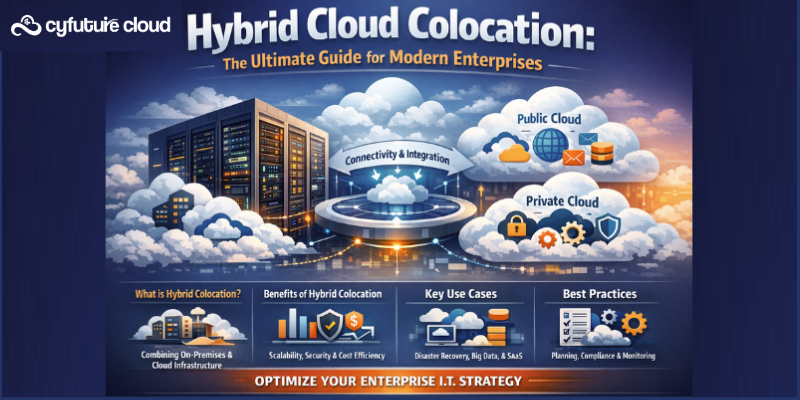Table of Contents
In the ever-evolving landscape of network security, firewalls play a crucial role in safeguarding organizations against the ever-present cyber threats. One such firewall solution that has gained significant recognition is the NSX Distributed Firewall, provided by VMware’s NSX platform. Designed to operate at the hypervisor kernel level, this software-defined firewall offers advanced security features and benefits within virtualized environments. In this comprehensive guide, we will delve into the concept, functionality, benefits, implementation steps, best practices, and limitations of the NSX Distributed Firewall. By the end, you’ll have a thorough understanding of this powerful security solution and its implications for securing your virtual infrastructure.
Now, let’s dive into the details of the NSX Distributed Firewall and explore the world of granular security and micro-segmentation it brings to your network.
What is NSX Distributed Firewall?
The NSX Distributed Firewall is a software-defined firewall solution provided by VMware’s NSX platform. It operates at the hypervisor kernel level, providing micro-segmentation capabilities to secure network traffic within a virtualized environment. Unlike traditional perimeter firewalls, the NSX Distributed Firewall focuses on east-west traffic between virtual machines (VMs) and enables granular security policies for each workload.
Benefits of NSX Distributed Firewall
Implementing the NSX Distributed Firewall offers several key benefits to organizations:
– Enhanced Security: The NSX Distributed Firewall provides layer 4 to layer 7 security services, enabling advanced threat detection, intrusion prevention, and deep packet inspection. It helps prevent lateral movement of threats within a virtualized environment.
– Micro-segmentation: With the NSX Distributed Firewall, organizations can create granular security policies and isolate workloads within the network. This micro-segmentation approach reduces the attack surface and minimizes the impact of security breaches.
– Simplified Management: As a part of the NSX platform, the Distributed Firewall offers centralized management and policy enforcement across the virtual infrastructure. This simplifies security operations and ensures consistent policy implementation.
– Scalability: The NSX Distributed Firewall is designed to scale with the virtual infrastructure. It can handle a high volume of network traffic while maintaining performance and security efficacy.
How Does NSX Distributed Firewall Work?
The NSX Distributed Firewall leverages the virtual switch capabilities of VMware’s NSX platform to inspect, filter, and secure network traffic at the hypervisor level. It operates based on a set of distributed firewall rules, which can be defined and managed centrally through the NSX Manager.
When network traffic passes through the virtual switch, the NSX Distributed Firewall applies the defined rules to determine whether the traffic should be allowed, blocked, or redirected for further inspection. This process occurs in real-time, ensuring that traffic within the virtual environment is subjected to the appropriate security policies.
Key Features
The NSX Distributed Firewall offers several key features that contribute to its effectiveness:
– Distributed Nature: Being distributed, the firewall is present at every hypervisor host in the virtualized environment. This approach allows for the inspection and enforcement of security policies at a granular level, providing visibility and control over network traffic across the entire infrastructure.
– Stateful Inspection: The NSX Distributed Firewall maintains the state of network connections to enable effective traffic inspection. By keeping track of connection states, the firewall can enforce policies based on both the source and destination addresses, ports, and protocols.
– Application-Awareness: The firewall can identify and secure traffic based on specific applications or services. It can detect application-level attributes within network packets and apply relevant security policies. This application-awareness enhances the overall security posture of the virtualized environment.
– Identity-Based Policies: NSX Distributed Firewall integrates with identity and access management solutions, allowing organizations to define security policies based on user identities and group membership. This enables fine-grained access control and enhances security for sensitive resources.
Use Cases
The NSX Distributed Firewall can be applied to various use cases, including:
– Multi-Tier Applications: It enables micro-segmentation of multi-tier applications, providing isolation and security for different components within the application stack.
– Virtual Desktop Infrastructure (VDI): The Distributed Firewall enhances security for virtual desktops, ensuring that each virtual desktop is protected individually and preventing lateral movement of threats.
– Cloud Environments: When deploying applications in the cloud, the NSX Distributed Firewall offers granular security policies and controls, securing inter-VM traffic within the cloud environment.
– Compliance and Regulatory Requirements: Organizations subject to specific compliance and regulatory requirements can leverage the NSX Distributed Firewall to meet these obligations. It provides the necessary controls and visibility to address security requirements effectively.
Implementation Steps
To implement the NSX Distributed Firewall in your environment, follow these steps:
Step 1: Assess Requirements
Identify the specific security requirements and use cases within your virtual infrastructure. Determine the level of micro-segmentation and isolation required for different workloads.
Step 2: Plan and Design
Develop a comprehensive security plan and design, considering factors such as network topology, security zones, and firewall rules. Align the design with your organization’s security policies and best practices.
Step 3: Deploy NSX Manager
Install and configure the NSX Manager, which serves as the central management platform for the NSX Distributed Firewall.
Step 4: Configure Distributed Firewall Rules
Define the necessary firewall rules to enforce security policies. Specify the allowed and blocked communication between virtual machines based on their characteristics.
Step 5: Test and Validate
Thoroughly test the implemented security policies and validate their effectiveness. Conduct penetration testing and ensure that the intended micro-segmentation is achieved without hindering legitimate traffic.
Step 6: Monitor and Maintain
Regularly monitor the NSX Distributed Firewall to identify any anomalies or security incidents. Keep the firewall rules up to date and review them periodically to align with evolving security requirements.
Best Practices
Consider the following best practices when implementing and managing the NSX Distributed Firewall:
– Design for Micro-segmentation: Plan your security architecture to maximize the benefits of micro-segmentation. Identify and group workloads based on their security requirements, and define appropriate firewall rules accordingly.
– Least Privilege Principle: Apply the principle of least privilege when defining firewall rules. Only allow necessary communication between virtual machines and block all other unnecessary traffic.
– Regular Rule Review: Review and update firewall rules periodically. Remove any outdated or unnecessary rules and ensure that the firewall policies align with the current security requirements.
– Security Monitoring: Implement robust monitoring and logging mechanisms to detect and respond to security incidents effectively. Leverage security information and event management (SIEM) solutions to consolidate and analyze firewall logs.
– Stay Up to Date: Keep the NSX Distributed Firewall components and the NSX platform up to date with the latest patches and updates. Regularly check for security advisories and apply necessary fixes promptly.
Troubleshooting
While using the NSX Distributed Firewall, you may encounter certain issues or challenges. Here are some common troubleshooting steps to consider:
– Rule Conflicts: Check for any conflicting firewall rules that may cause unexpected behavior. Ensure that the rule evaluation order is correct and adjust the rules accordingly.
– Misconfigured Security Groups: Verify that the virtual machines are assigned to the correct security groups. Misconfigurations can result in incorrect firewall policy enforcement.
– Performance Degradation: Monitor the performance of the NSX Distributed Firewall, especially during periods of high network traffic. If performance degradation is observed, consider optimizing the firewall rules or scaling the infrastructure accordingly.
– Packet Drops: Investigate any packet drops reported by the Distributed Firewall. Analyze the associated logs and network traffic to identify the root cause and address the issue.
Limitations and Considerations
While the NSX Distributed Firewall offers numerous benefits, it is essential to be aware of its limitations and considerations:
– Management Overhead: Centralized management of the Distributed Firewall can require additional resources and expertise. Organizations should allocate sufficient time and personnel for effective policy management.
– Performance Impact: Intensive firewall rules or excessive micro-segmentation can introduce performance overhead. Regular performance monitoring and optimization are necessary to maintain optimal network throughput.
– Integration with Legacy Environments: Integrating the NSX Distributed Firewall with legacy environments or non-virtualized workloads may require additional configuration and adaptations.
– Complexity: Implementing micro-segmentation and managing a distributed firewall solution can be complex. Adequate planning, design, and ongoing monitoring are crucial for success.
Comparison with Traditional Firewalls
Compared to traditional perimeter firewalls, the NSX Distributed Firewall offers distinct advantages. While traditional firewalls primarily focus on securing traffic at the network perimeter, the NSX Distributed Firewall provides granular security within the virtualized environment. Key differences include:
- Traditional firewalls secure north-south traffic, while the NSX Distributed Firewall focuses on east-west traffic within the virtualized environment.
- Traditional firewalls rely on physical appliances, while the NSX Distributed Firewall operates at the hypervisor level, leveraging the virtual switch.
- The NSX Distributed Firewall offers more granular security policies, application-awareness, and identity-based controls, enhancing security within the virtual infrastructure.
Conclusion
The NSX Distributed Firewall is a powerful security solution that enables micro-segmentation and advanced threat protection within virtualized environments. By implementing this software-defined firewall, organizations can enhance their security posture, isolate workloads, and prevent lateral movement of threats. The key benefits, implementation steps, best practices, and considerations discussed in this article provide valuable insights for organizations looking to leverage the NSX Distributed Firewall to safeguard their virtual infrastructure.
Recent Post
Send this to a friend

 Server
Colocation
Server
Colocation CDN
Network
CDN
Network Linux
Cloud Hosting
Linux
Cloud Hosting Kubernetes
Kubernetes Pricing
Calculator
Pricing
Calculator
 Power
Power
 Utilities
Utilities VMware
Private Cloud
VMware
Private Cloud VMware
on AWS
VMware
on AWS VMware
on Azure
VMware
on Azure Service
Level Agreement
Service
Level Agreement 



















